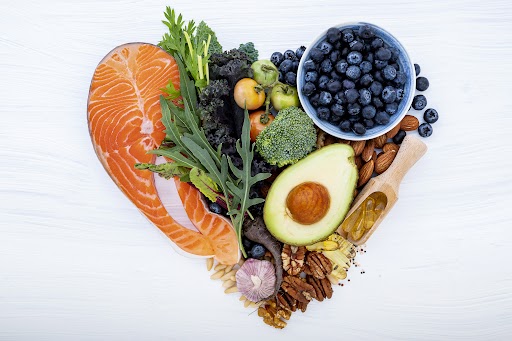Everyone needs to eat – some more than others. There are so many food choices that picking something healthy may not always be on our minds. “Let’s say you don’t have a nutritional background – it can be daunting to navigate what’s good and what’s not good. With this pandemic, I have noticed from friends, family, and colleagues that the majority of us have become more health conscious.
For the wise men have said and proved the popular proverb, ‘what you eat, you become‘. Eating healthy food would definitely lead to a healthy body and a healthy lifestyle. Unhealthy food, on the other hand, would affect your health negatively and open doors for various potential health risks.
The various kinds of unhealthy food that may affect your health and put it at risk are the following:
- Junk Food
- Oily and deep-fried Snacks
- Old Packaged fruits and vegetables
- Food with high fats and sugar
- Candies, Treats, and gums
- Dense Dairy Products
It is important to understand that the food items mentioned above are not necessarily bad food choices. It is imperative to savor varieties of food and pleasure our taste buds, get an experience of everything. What is not acceptable is when the consumption of these food items goes overboard.
Furthermore, the treats work well as rewards, but it should be done in control. Often, we fail to realise when the treats go a little overboard. Hence, it is important to look for the signs and identify them.
Look out for these definite and most prominent signs:
- Sudden weight gain or weight loss
- Overweight or Underweight, i.e., improper BMI
- Indigestion or constipation
- Loose motions
- Laziness and low activity levels
- Tooth decay, Cavities, Yellowness of Teeth, or Consistent Bad Breath
- Sleeping problems and uncertain sleep schedules
- Poor concentration and focus
- Poor or slow physical growth

If you observe any of these obvious signs, it is not difficult to conclude that these are the consequences of poor eating habits or overeating unhealthy foods.
Leading a healthy lifestyle is different for different people. Metabolism, body shape, level of exercise and profession all have an effect on what kind of lifestyle is healthy for you. If you play rugby for a living, your healthy lifestyle will be very different from someone who explores the arctic. Similarly, someone who works at a desk from 9 to 5 and goes to spin class three times a week will have a different healthy lifestyle from a lumberjack.
Trying to judge how healthy your lifestyle is can’t be judged solely on weight or BMI either. People with extremely low fat percentage can be morbidly obese according to BMI due to the amount of muscle they have. The best way to judge your lifestyle is based on how you feel. If you feel sluggish, have lots of excess fat, or struggle to walk short distances without needing to stop to catch your breath, it is safe to assume that you may not have the healthiest lifestyle. However, constantly jumping from the latest healthy eating fad to the next, not eating enough calories and over-exercising isn’t a healthy lifestyle either.
There is an element of balance involved between exercise, rest, and what you eat. Make sure that you are getting the recommended daily amounts of vitamins, minerals, and good fats. Don’t completely avoid things like doughnuts and treats either, allowing yourself small treats doesn’t mean you aren’t living a healthy eating lifestyle and it makes it much easier to maintain a balance if you don’t completely rule out one food group that others around you indulge in.
Steps to acquiring healthy eating habits
First, in order to speed up the metabolism, it is necessary to eat at least six times a day. By doing this, the body does not go into starvation mode and is constantly burning fat to maintain energy. Three of the meals should be small healthy snacks and the other three should be breakfast, lunch, and dinner.
Also, acquiring healthy eating habits does not mean depriving yourself of food you like, but rather finding better replacements. For example: when eating breakfast, instead of making traditional pancakes with eggs and flour, make a protein pancake with egg whites and protein powder. You can also add in fruit for a bit of sweetness, or if you want to treat yourself to chocolate chip pancakes, dark organic chocolate is always a great alternative (and quite fulfilling).
Second, it is important to understand what you are putting in your body. You are making a big mistake if you are constantly eating food and not reading what ingredients are in it. Anything with ingredients that are hard to pronounce will most likely be hard for your body to break down. When your body does not know how to burn food, then it starts storing fat and packing on the pounds.
Therefore, you need to change your consciousness of food. When you reach for that snack, instead of eating a special protein bar, choose blueberries and almonds, or grapefruit and cashews. When making a salad, avoid using dressing. Olive oil and balsamic vinegar is a much healthier option and tastes great too.
Third, try not to eat dinner past 7 pm and keep it the lightest meal of the day. A nice green salad with some chicken breast is perfect. Protein is essential in healthy diets because it gives you the energy to work out and keep active throughout the day. If you become hungry after dinner, try to keep snacks to reasonable portions of fruits or vegetables. And most importantly, drink lots of water. In fact, as soon as you wake up you should drink two glasses of water before eating breakfast. This small tip can make a huge difference.
For anything to be sustainable it has to be enjoyable! We know that proper nutrition is important every day, but it’s not always easy! Here are 8 helpful ways to adopt healthful habits that will last.
- It all begins with the choices you make at the grocery store.
You can start by browsing your pantry. Assess what foods need to go and what can stay. Make room for new healthy additions and be open to swapping old items with healthier options. When you’re grocery shopping, stick to the perimeter of the grocery store as a rule of thumb. The center of the store holds much of the processed foods available. Try to buy plenty of whole foods such as fruits, vegetables, whole grains, and lean meats. Remember to store your healthiest foods at the front of the fridge where you can grab them easily.
- Never skip breakfast.
Breakfast is your system’s jumpstart to the day! Whether it’s a simple cup of yogurt with your favorite fruit or scrambled eggs and toast, make sure you break that fast! Also, try eating smaller meals more frequently for sustained energy throughout the day. This avoids energy crashing from big heavy meals and provides a boost in metabolism.
- Make every meal as colorful as possible.
It’s easy to fall into the same old meal patterns and forget to incorporate a variety of different foods into our routine. This is easy to fix if you remember to make each meal as colorfully diverse as possible. A variety of colors also mean a variety of vitamins! Bright orange foods such as winter squash and carrots are rich in beta-carotene and vitamin C. Dark green vegetables have iron, vitamin K, and calcium. So mix it up and be sure to eat the rainbow!
- Ditch the salt.
We all love salt, but you’d be surprised to learn how much sodium is already in many of the foods we eat. Try replacing salt with different herbs and spices. The more herbs you try the more you’ll like and the fuller your spice cabinet will get with new and interesting flavors. The next time you make a meal, start seasoning your meal with herbs or spices first, then taste. You may find that you didn’t need the extra salt after all.
- Curb the sugar intake.
We all fall victim to sugar cravings now and then. However, we don’t often consider how much sugar we’re ingesting when that craving hits. For example, on average, there are roughly 9 grams of sugar in one chocolate chip cookie. Who eats just one? Nobody. That’s a lot of processed sugar. Don’t worry it’s not the end of the world yet! If you find yourself with a serious sugar craving, no problem, you have options. Try choosing natural sugar instead of having a piece of your favorite fruit. Before you know it, it will be like second nature.
- Plan and prepare.
If you haven’t heard of “food prep,” it’s as good to be in the know. This is a tried and true method for ensuring that you make healthy eating choices no matter how busy your life gets. Pick a day during the week, Sunday usually works well, and prepare some healthy food options for the week. For example, boil some eggs and store them in the fridge for an easy 7 grams of protein. Another idea would be to wash, chop and prepare veggies for easy snacking. You can also dice up bell peppers and freeze them for an easy way to add vitamin C and antioxidants to any meal. You can also pre-cook a large amount of any rice or grain of your choice for easy rice bowl lunches or dinners. You can add steamed veggies or your favorite protein (chicken, salmon, beef) for an effective meal that’s quick to make.
- Drink plenty of water.
Staying hydrated is easy to forget, especially when it starts cooling down outside. Did you know your body is composed of roughly 60% water? This means that getting plenty of water throughout the day is vital for processes such as digestion, absorption, circulation, transportation of nutrients, and body temperature balance. It’s also easy to mistake dehydration for hunger. Sometimes when you think you’re hungry, your body is actually trying to tell you it’s becoming dehydrated and needs water. Try starting your day with a glass of water right when you wake up. You will probably feel quite thirsty anyway. This will help wake up your organs and get them functioning properly after being asleep all night. Get a reusable water bottle you can continuously fill throughout the day. This will help you avoid waiting until you’re thirsty to drink water. If you feel thirsty, dehydration has already set in.
- Use gentle cooking methods.
The more you do to your food, the less it will do for you. This is referring to overcooking foods. This will drain the foods of their nutrients. Avoid deep-frying or over-boiling and practice other methods of food preparation in order to preserve the nutrient value. Instead, you can lightly sauté or steam vegetables and bake meat and fish. Use olive oil instead of butter when possible, to reduce your saturated fat intake.

Some tips for healthy eating:
- Eating vegetables and fruits in a wide range of bright colors give your body a wider range of nutrients. Leaving the skins on, when possible, gives the nutrients an extra boost. Remember to wash all vegetables and fruits before eating.
- Fibre is very important to your diet. Breakfast is a great time to enjoy whole-grain foods along with fruits.
- Cut the butter and salt by seasoning your foods with lemon juice, balsamic vinegar and herbs.
- While fresh food is much better for you, if you do use packaged foods, read the labels and choose items that are low in salt, saturated fat and trans fat.
- Use lean meat with excess fat removed and poultry with the skin removed. Do not sauté in butter or fry.
- Control your portion size to limit calorie intake. Also eat more slowly to give your system time to recognize when you are full. Here is a link to picture how large portions should be.
- Drink enough fluids to keep your body working properly. This is especially true in older adults because they don’t necessarily feel thirsty even if their body needs hydration. These liquids should not have added sugars and should be low-fat if dairy and low-sodium if broths.
- When eating out look for low-fat options, have dressings, sauces and butter served on the side so you can control how much you use.
- Select tomato-based sauce over the cream-based or white sauce.
- Ask to substitute low-calorie options for sides like French fries.
Incorporating a few, or all of these tips will send you well on your way to improving your healthful habit repertoire. Don’t be too hard on yourself! It takes roughly 1 month to make a new action into a habit. You can do it! Good luck and Good Health!


0 Comment